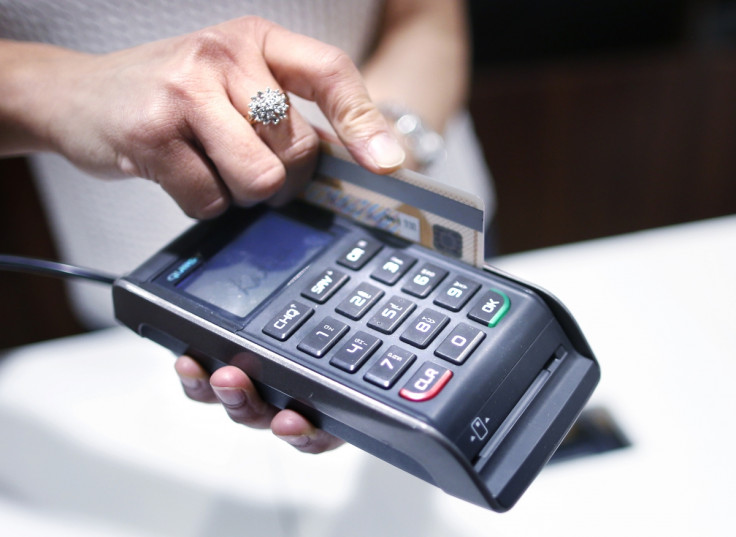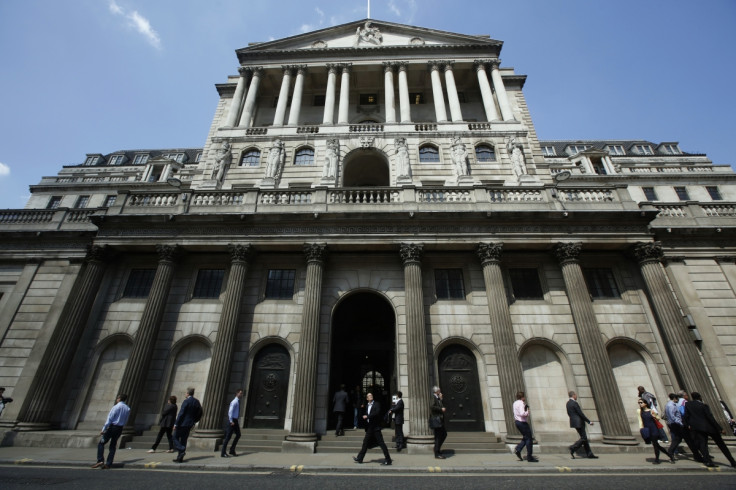Placid consumers and inert policymakers are swelling up the global credit card bubble
A credit card is one of the most expensive ways to borrow, yet its global usage is getting depressingly high.

In 2008, Keynesian economics, financial wizardry and "creative" accounting led the whole world blindfolded into the greatest economic meltdown since the Great Depression. Why did the economists, bankers, finance experts, and academics fail to predict what was about to unfold?
If they relied on their economic theories, and those theories did not help them to foresee disaster, have they updated those theories or developed new theories? Now, almost 10 years later, the world economies appear to be still floundering in unexplained little to no growth, increasing consumer spending, and rising personal debt, especially an increasing levels of credit card debt.
So, are the economists applying lessons learned from the 2008 meltdown, if any? Are the economists warning the national policymakers? Why does it look like the world is heading for a credit card bubble?
Let's examine major economies to see what is happening in terms of credit card debt, which appears to be in crisis.
In the US, the Federal Reserve reported that revolving credit, which includes credit cards, increased to $1trn (£775bn) in February 2017, up from about $940bn at the same point in 2016.
An expensive piece of plastic
Unfortunately, a credit card is one of the most expensive ways to borrow, averaging 19.36% interest per year. Just about every major retail store now issues its own brand credit card, with the promise of rewards and discounts.
Their interest rates range between 25% and 30%. These credit cards are real cash cows for the stores because cardholders who do not clear the monthly debt and accumulate a lot of interest.
More than 157 million Americans owe on one or more credit cards. Altogether, debt is nearly as much as it was at the start of the recession in December 2007, which begs the question: Is the US heading for a credit card bubble?
So far the rapid increase in credit card debt is blamed on family income, which has been increasing steadily in the past decade, but has failed to keep up with increases in the cost of living over the same period.
A credit card is one of the most expensive ways to borrow, averaging 19.36% interest per year.
Households are unable to meet their living expenses and as a result they use credit cards for major expenses, even rents and mortgages. Meanwhile, inflation has been pegged at 2.4% for the previous 12 months ending March 2017. How long can the credit cardholders continue to meet their obligations? Right now, consumers are very vulnerable to market fluctuations.
Changes are actually happening in the economy and lenders are being exposed. Legal and General Investment Management (LGIM) economist James Carrick said in 2016, that LGIM has started to reduce risk in the US amid "signs that things are going wrong".
He sees similarities between current trends and the conditions that existed in December 2007. Carrick believes that there are enough indications that the US economy could deteriorate in 2017 and be in a full-scale recession by 2018. He blames a vicious corporate credit cycle, weaker growth, and lower corporate profits, which are all due to low oil prices and China's slowdown. This is already being felt through increasing loan defaults, which could spin out of control he claimed.
One only wonders why the other financial institutions seem to conduct business as usual under current conditions and continue to lend on credit cards. But then, it is a well-known fact that in the last recession, banks were bailed out by the US Treasury and the Federal Reserve using the taxpayers' money. So why should they worry?
It's not just American consumers
In the UK, personal debt rose by 10.8% for the year ending in November 2016, growing at its fastest rate in 11 years to £192.2bn. This is uncomfortably close to £208bn, the amount of UK consumer credit card debt in September 2008, when Lehman Brothers fell apart.
That is when the banking crash triggered the economic recession worldwide. That £192.2bn includes £66.7bn in credit card debt. It is claimed that the increase in credit card debt follows at least one year of intense competition for new customers by credit companies, which even offer 0% interest for the first few years. By February 2017, credit card debt had risen to £67.3bn.
Meanwhile, according to a Reuters' poll, economists expect UK economic growth to decrease by more than half to a rate of 1.1%, while inflation rises to almost 3% compared to 0% in January 2016. Therefore, consumers in the UK are very vulnerable right now, and may be impacted by any small change in the economy. Soon consumers might be unable to service their credit cards and lenders will have to write off large amounts of credit card debt.

Obviously, UK authorities are worried about this continuous increase in personal debt in general and would like to prevent a consumer debt bubble. The Bank of England announced, after the February 2017 data was published, that its main banking regulator is now reviewing lending standards.
Apparently, the easing of lending standards on unsecured loans posed a potential risk on the nation's financial stability by allowing too much unsecured debt. Obviously the Bank of England can see all the right indicators for an economic crisis and is worried about it.
How about the British retail banks that are exposed to such a high risk of default? Are they worried too? The Bank of England's Financial Policy Committee said that the consumers were more likely to default on credit card payments than on mortgage payments.
Consumers often lack the proper financial knowledge to make informed decisions.
So while the defaults might not affect national stability, they will affect the lenders' stability. Apparently, the latest stress tests indicate that lenders might lose around £18.5bn on their books in the event of a major economic crisis. Is there any wonder why lenders keep issuing more credit card debt?
Consumers in the US and UK seem to be generally content with the current economic conditions and are therefore spending more freely. But since the average consumer is not necessarily an economic expert and hence they will take advantage of any incentives to borrow and spend in ignorant bliss. Consumers often lack the proper financial knowledge to make informed decisions.
However, financial institutions are a different breed altogether. They should really be worried about increased risk exposure. They employ economic big guns to study the economy on a daily basis, watching all economic indicators from exchange rates, interest rates, inflation rates, economic growth or shrinkage rate, unemployment rates, derivatives markets, market volatility, securitisation, etc.
They employ risk management experts to manage a variety of risks – market, geopolitical, operational, credit, etc. Why do they ignore this risk of default that can happen at a slight downturn in the economy?
Given all this, one would have to ask:
- Why do these financial institutions continue to issue credit cards aggressively when a credit card bubble is highly likely?
- What is their secret?
- One tends to wonder if they are confident in getting another banking bailout – or bail-in – by the US taxpayers, the US Treasury and the US Federal Reserve?
The credit card crisis is not an accident. Credit card debt is securitised: bundled and sold off to other financial institutions to benefit from the large interest rates that consumers pay. Financial institutions have created a bubble simply because credit card debt is a lucrative business.
One can safely say that financial institutions are unscrupulous in the credit card business, sending applications to everyone and anyone, including people who have no money, no jobs, and bad credit.
Ironically, store credit cards are very easy to get – even for people with low credit ratings. As a result, consumers are no longer saving money for their purchases in order to buy big-ticket items when they can afford to; they now buy what they can afford to pay monthly. This is one of the reasons why credit card debt escalated to such proportions.
The US Federal Reserve increased the interest rate by 25 basis-points in December 2016. Naturally, banks benefited by passing higher interest onto the credit card holders faster than they passed on to the depositors. It makes good business sense to make a higher profit that way so they kept issuing credit card debt.
One can claim that the increased spending is a boost to the economy. True. But, is the boost in the economy real or it is a temporary one waiting for a downturn, which seems to be a natural result? Is it possible that consumers use more credit card debt simply because they do not have the cash to purchase goods? This possibility is the one which is simply being ignored. My question is why?
The Bank of England is looking into the problem in order to prevent a possible crisis. How about the US government and the Federal Reserve Bank? Are they doing something about the trillion-dollar credit card bubble? The bubble seems to be ready to burst in America. Auto-sales fell by an average of 6.26% in the year ending in April 2017. It is said that one of the main reasons for the crisis in the auto industry is that consumers are already drowning in debt.

A survey done by Northwestern Mutual showed that about 50% of Americans owe more than $25,000 (excluding mortgages), with the average consumer owing more than $37,000 compared to income slightly more than $30,000. They estimated that 45% of Americans spend up to half of their monthly income on paying debts, excluding mortgages.
So if people are stretched too far to buy new cars, how about their credit card debt? Well, it is said that Synchrony Financial, who issues credit cards for Walmart and Amazon, increased net charge offs by 5% three months ago and their share price dropped in value, and is now 27% down year-to-date. Another credit card company Capital One's provisions for bad debts increased to $2bn, and its net charge-offs increased by 28% to $1.5bn in its first-quarter report.
Synchrony, Capital One, and Discover have together increased their first-quarter provisions for bad debts by 36% year-over-year. Can we say the credit card bubble is still to come? The credit card bubble is now here in the USA and UK!
Same depressing saga everywhere
In January 2017, it was estimated that there were 16,699,272 credit cards in circulation in Australia, and Australians owed about A$32.9bn (£18.81bn, $24.35bn) in credit card debt accruing interest of 17.22%, and A$51.8bn in total. In March 2017, 3.1% of Australian mortgaged households (about 22%) were in "mild mortgage stress". That is an increase of 1.5% on the February 2017 figures. Apparently, the problem is interest rate increases by the big four banks.
Households in "mild mortgage crisis" can only pay their mortgage by cutting back on spending cash and by using their credit cards more. So increases in credit card use are partly due to shortages of money. Data from the Digital Finance Analytics show that 1% of all households are in severe stress, i.e., they are behind with their payments and seek help from debt counsellors.
According to the National Debt Helpline, when things go wrong, Australians tend to cling to crooked credit card companies and payday lenders who offer a quick fix. Unfortunately, in a short period of time, everything falls apart and they cannot manage anymore. That is when they seek help.
In China, the use of credit cards is fairly new but more Chinese people are gradually getting into credit card debt. Reports in September 2016 stated that overdue credit card debt increased by 4.9% in the second quarter. Credit card debt overdue by six months stood at $7.2bn on 5.8bn credit cards. Because of the level of debt between Chinese banks and other countries, any meltdown in China is bound to have an impact on many financial institutions in the West.
One can look at many other countries and the story will probably be the same. The credit card debt bubble has arrived at a global level. Lenders are feeling the heat as consumers are gradually failing to pay and they are forced to write off some of the debt.
A few lenders, like Northwestern Mutual in the USA, are taking steps to reduce the risk. The credit card crisis might not be discussed openly on the news for whatever reasons, maybe to maintain consumer confidence, but the crisis is here.
Iris Mack, PhD, EMBA, is a distinguished US academic who currently lectures on energy derivatives, trading and risk management for Fitch Learning and Tulane University, Louisiana, United States. She is a former MIT professor and derivatives quant/trader who has worked in financial institutions in the US, Europe and Asia. She has also previously worked for Nasa, Boeing and AT&T Bell Laboratories.
Over the years, Iris has authored several books including: Energy Trading and Risk Management: A Practical Approach to Hedging; Trading and Portfolio Diversification; A Wall Street Bailout for Main Street: This Bulletproof Trade Will Help You Get Paid and Mama says, "Money Doesn't Grow on Trees."
© Copyright IBTimes 2025. All rights reserved.






















